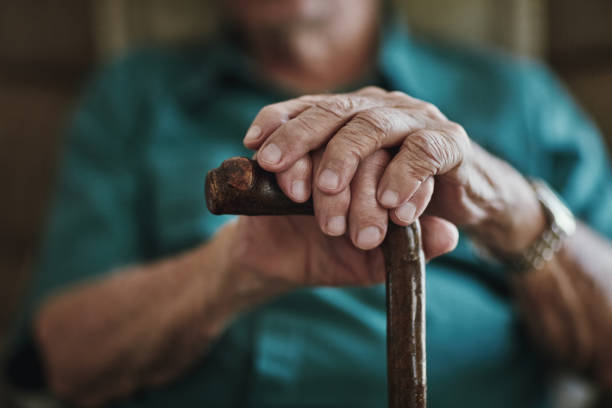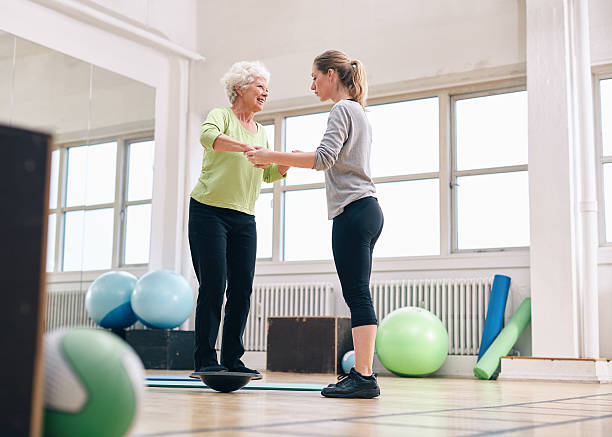Maintaining balance becomes crucial for ensuring independence and a higher quality of life as we age. The risk of falls can significantly impact overall well-being, yet with proper strategies, this risk can be minimized. In this blog, we provide actionable advice and exercises to help seniors enhance their stability and confidently navigate their daily lives.
Contents
Understanding the Importance of Balance
The Impact of Aging on Balance
Aging naturally affects muscle strength, joint flexibility, and coordination, all of which are essential for stability. Decreased vision, medication side effects, and existing health conditions can further exacerbate balance issues. Thus, it is essential to take proactive steps to counter these effects and maintain a healthy, active lifestyle.
Consequences of Falls
Falls can lead to severe injuries, including fractures and head trauma, diminishing one’s ability to remain independent. Beyond physical harm, the fear of falling can result in reduced activity, leading to further muscle weakness and balance degradation. Addressing balance and stability is critical to breaking this cycle and maintaining overall health.
Strategies to Enhance Balance
Regular Exercise
Engaging in routine physical activity is one of the most effective ways to improve balance. Activities that target strength, flexibility, and coordination are particularly beneficial.
Strength Training
Exercises that strengthen the legs, core, and lower back provide a solid foundation for stability. Workouts such as squats, leg lifts, and seated marches can be performed at home and tailored to individual fitness levels.
Flexibility and Stretching
Maintaining flexibility reduces the risk of muscle stiffness and joint rigidity. Simple stretches, such as calf stretches, hamstring stretches, and ankle rotations, can improve range of motion and balance.
Balance-Specific Exercises
Incorporate balance exercises like standing on one foot, heel-to-toe walking, and Tai Chi into your routine. These practices enhance proprioception, the body’s ability to sense movement and positioning, which is vital for preventing falls.
Home Safety Modifications
Creating a safer home environment drastically reduces fall risk. Simple adjustments can have a significant impact.
Declutter Living Spaces
Keep floors clear of unnecessary items, cords, and loose rugs that can pose tripping hazards. Ensure walkways are unobstructed and well-lit.
Install Assistive Devices
Handrails in bathrooms and on staircases, non-slip mats in the shower, and grab bars near toilets provide extra support and safety. For additional stability, consider using a sturdy cane or walker.
Improve Lighting
Install bright, glare-free lighting to enhance visibility in all areas of the home. Motion-sensor lights can be particularly useful for preventing falls at night.
Lifestyle Adjustments for Better Stability

Healthy Diet and Hydration
Proper nutrition and hydration play a critical role in maintaining muscle strength and overall health, which in turn affects balance.
Nutrient-Rich Foods
Include a variety of fruits, vegetables, lean proteins, and whole grains in your diet to ensure an adequate intake of essential vitamins and minerals, such as calcium and vitamin D, for bone health.
Staying Hydrated
Dehydration can lead to dizziness and confusion, increasing the risk of falls. Drink plenty of water throughout the day.
Regular Health Check-Ups
Routine medical evaluations can help identify and manage conditions that may affect balance, such as vision problems, hearing loss, and vestibular disorders.
Vision and Hearing
Regular eye and ear exams are essential. Ensure that prescriptions for glasses or hearing aids are up-to-date to prevent sensory deficits that could lead to falls.
Medication Management
Some medications may have side effects that affect balance. To manage and mitigate these risks, regularly review your medications with your healthcare provider.
Mental and Emotional Well-being
Managing Anxiety and Fear
Fear of falling can limit activity, leading to a decline in overall stability and strength. Addressing this fear is crucial for maintaining an active lifestyle.
Mental Health Support
Engage in activities that reduce stress and anxiety, such as meditation, yoga, and deep breathing exercises. Consider seeking support from a therapist or counselor if fear of falling significantly impacts your daily activities.
Building Confidence
Gradual exposure to balance exercises can help build confidence. Start with exercises that feel safe and gradually increase the difficulty level as your balance improves.
Social Engagement
Staying socially active can have positive effects on mental health and overall stability.
Group Activities
Join exercise classes or clubs to stay active and engage with peers. Activities such as dancing, water aerobics, and group walks can be both enjoyable and beneficial for balance.
Conclusion
Maintaining balance is a multifaceted endeavor that involves physical exercise, home safety modifications, lifestyle adjustments, and mental well-being. By adopting these strategies, seniors can significantly improve their stability, regain confidence in their movements, and lead active, fulfilling lives free from the fear of falling. Empower yourself with these tips to ensure a safer and more balanced everyday life.
